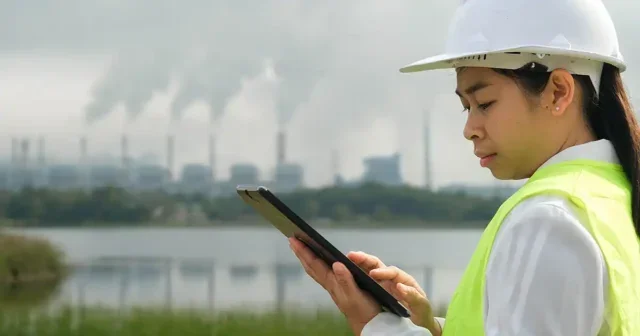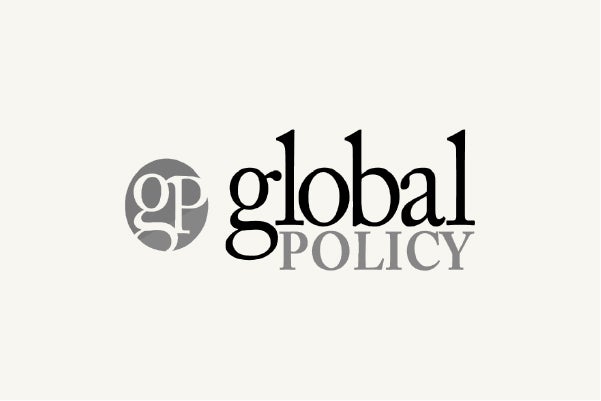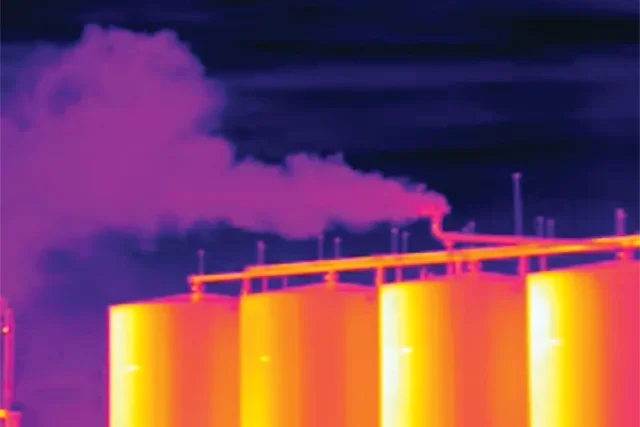- Resources
- The ISSB sector standards: At long last, methane gets the focus it deserves
Resources
The ISSB sector standards: At long last, methane gets the focus it deserves
Published: November 21, 2025 by Andrew Howell, CFA, Senior Director and Head of Research for Sustainable Finance, EDF and Ismael Hernandez Rivera, Senior Manager Sustainable Finance, EDF
Next week, the International Sustainability Standards Board (ISSB) closes its consultation on proposed amendments to several sector-specific disclosure standards (the “SASB standards”) including for coal operations, oil & gas, metals & mining, iron & steel, and processed foods. Among numerous proposed enhancements, one deserves to be called out: the improved treatment of methane disclosures. Methane is responsible for roughly one-third of today’s global warming, yet many corporate climate disclosures still treat it as a footnote. We strongly support these enhancements and encourage investors and other stakeholders to share their insights into the importance of these proposed changes.
The importance of methane reporting
The ISSB reporting standards are rapidly becoming the baseline of a globally interoperable sustainability disclosure architecture. Around the world, regulators in a growing list of countries, including the UK, Australia, Japan, Canada, and Nigeria, are increasingly aligning local disclosure requirements with these standards or referencing them explicitly.
The SASB standards are sector-specific disclosure guidelines developed by the Sustainability Accounting Standards Board. These comprise a critical part of the ISSB framework and are now undergoing a refresh. This is good news, because one area that is underserved by the current SASB standards is the treatment of methane. In its current form, SASB acknowledges methane, but generally groups it with overall greenhouse gas emissions. This framing understates methane’s distinct characteristics: its short atmospheric lifetime, its enormous 20-year warming potential, and the difficulty of measuring it with precision.
The way that methane shows up in corporate disclosure matters. In sectors like oil & gas, agriculture, and waste management, methane is a major source of climate impact (potentially exceeding the impact of CO2) and therefore represents a material transition risk but also creates opportunities. Yet companies have not been required to provide sufficiently detailed or accurate disclosures, particularly around measurement methodologies or source-level granularity. The ISSB’s proposed updates represent a meaningful correction: clearer definitions, more specific metrics and stronger expectations on measurement accuracy.
ISSB: An increasingly vital disclosure framework
The SASB refresh comes at a time when the ISSB standards are bringing increasing discipline and consistency to what had been a fragmented disclosure landscape. In past years, sustainability reporting had seen the emergence of multiple voluntary initiatives – the so-called “alphabet soup” of general and sector-specific frameworks and taxonomies – each eliciting useful information, but at times creating confusion for companies and investors. ISSB standards integrate the industry specificity of SASB standards with the financial materiality lens of the Taskforce on Climate-Related Financial Disclosures (TCFD). This unified framework strengthens the link between sustainability risks and financial performance, creating a disclosure baseline that can be applied across geographies and sectors. Companies that report under ISSB are positioned to meet their obligations in multiple markets without duplicative work, while providing their investors with comparable, decision-useful information.
Key improvements in the proposed changes
Methane is central to a few of the proposed enhancements to the SASB standards for oil & gas and coal operations. The addition of a separate Total Scope 1 methane emissions disclosure (in tons of methane rather than CO2 equivalent) is an important improvement. Disclosing methane emissions as a separate item rather than grouped with CO2 makes it easier to see the role it plays in a company’s footprint and how it is trending over time.
The Oil & Gas standards also call for details around a company’s membership in the Oil & Gas Methane Partnership 2.0 (OGMP 2.0). OGMP 2.0 is the leading measurement-based reporting framework for methane emissions from oil & gas. Traditionally, companies have reported methane emissions derived from factor-based estimates, which can dramatically understate actual emissions. OGMP 2.0 members agree to measure, manage, and report their methane emissions according to a rigorous method informed by direct measurement, greatly improving the reliability of their disclosures. Under the proposal, companies would report whether they are OGMP 2.0 members and their level of reporting under OGMP’s 1-5 measurement level framework. At the same time, non-OGMP 2.0 members are asked to disclose the methodologies, inspection frequency, technologies used, and any data limitations associated with methane disclosures, to help users interpret the data being disclosed.
The ISSB could further improve disclosures by asking companies to disclose the distribution of assets among OGMP measurement levels as well as to disaggregate methane emissions by emission source (flaring, venting, and fugitive emissions) and, where feasible, by asset type (operated vs. non-operated, geographic region, or facility type). This would further enhance comparability and support investor analysis of operational performance.
An opportunity for investors to weigh in
Methane has long been a weak spot of sustainability reporting: immense in climate impact but hidden within broad CO₂-equivalent metrics and inconsistent industry disclosures. With this consultation, the ISSB is poised to deliver important progress. Strengthening methane reporting in sector-specific standards will deliver clearer, more comparable, more decision-useful information for investors, and better align markets with what science tells us is one of the most urgent climate priorities.
Investors can use their own perspectives to help inform the ISSB framework, with comments accepted through ISSB’s online portal through November 30, 2025. After the comment period closes, ISSB staff will analyze submissions and deliberate revisions before issuing a finalized set of updated sector standards at some point next year.
We encourage all stakeholders to support these enhancements and advocate for continued refinement. Better methane disclosure is not just a technical improvement; it is foundational to credible climate risk management and real-world emissions reductions.




